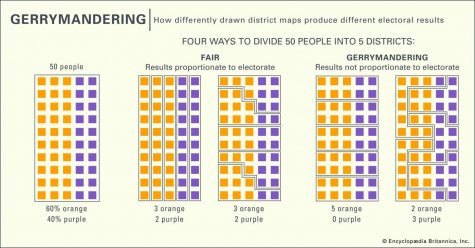The United States is the world’s oldest modern democracy, reaching 225 years this year. The election system that the country utilizes, has been alive and working for that same amount of time. But just because it has been working for over two centuries, doesn’t mean it’s flawless.
In more recent years, many Americans have been wanting to see major election reform, some going as far as calling for the abolishment of the Electoral College. But to know how to solve these problems, you have to know the cause of them. So, in this article, you will read how this system came in place, a few reasons why people may call it “flawed,” and solutions that have been brought up that could change the way elections are held, in an unbiased way.
The Electoral College is one of the most highly criticized parts of the American election system. Many people want to see it completely abolished, while others believe that it’s working perfectly fine and doesn’t need any reform. If you would like to learn more about the Electoral College, you can reference the “The Electoral College Explained” article.
When the Founding Fathers came up with the Electoral College, they thought it was the best way to elect a President. Procon.org states that this was because they didn’t want a system that may lead more populated states to overpower and squash the voices of smaller states. For example, a vote from California could theoretically be equal to one from Nebraska. All parts of the country may be heard when selecting the President of the United States. They also didn’t want uninformed voters to make decisions they didn’t know they were making, so they wanted a group of people that may understand the information and make the best decisions. These arguments are still used to this day by people that favor the Electoral College.
Many people argue that because of modern technology, people can get all the information they need on candidates and how this process works, meaning that citizens don’t need other people to make informed decisions for them. People also argue that the Electoral College gives way more power to “swing states,” which means the power of electing a President may fall in the hands of a few people. A swing state is a state that could go either way when it comes to Presidential elections. Even though Alexander Hamilton wanted this system because it helped keep away from any bias, systems today have been put in place to make sure people vote along party lines, meaning that there is strong bias when electors cast their votes.
To abolish the Electoral College system, a Constitutional Amendment would have to be passed by a ⅔ approval by both parts of Congress and approval by at least 38 states.
Gerrymandering is the process of rewriting a district in a way that favors one party over the other. Gerrymandering first came into place when in 1812 Massachusetts Governor Elbridge Gerry redrew state senate election districts to favor the Democratic-Republican Party. Gerrymandering is not a partisan thing. Both Democrats and Republicans have used Gerrymandering to favor their candidates.
The entire point of Gerrymandering is to make sure one party keeps political power over an area, completely ignoring what voters would like to say. This is called partisan Gerrymandering. Sometimes, districts are drawn to help incumbents stay in power or lead favored candidates to rise into power. This can also be called bipartisan Gerrymandering. There can also be something called racial Gerrymandering, which redraws a district based on race. According to fairvote.org, people that use Gerrymandering heavily rely on the winner-take-all system, which gives all the votes to a candidate that wins. They can pack, stack, and crack votes to make sure that some votes count more than others.
Gerrymandering cases have been brought to the Supreme Court. For example, yourdictionary.com said that Davis v. Bandemer was a case of partisan gerrymandering where Indiana Democrats felt like their voices were being suppressed because of a 1981 redistricting plan. Brennancenter.org stated that in the Benisek v. Lamone case, plaintiffs claimed that Maryland’s Sixth District flipped from Republican to Democrat because Democrats engineered the flip to try and “punish” Republicans that voted for a Republican candidate. Stopping gerrymandering is a process that is way more complicated than you may think.

Winner-Take-All/Plurality Rules Voting
Plurality rules voting is a system that allows a voter to vote for only one candidate, and a candidate with the most votes wins. Don’t get it confused with majority rules. Majority rules voting states that a candidate needs at least 50% of the votes to win. In plurality rules voting, a candidate doesn’t need 50% or more votes to win. America does not have “majority rules,” America has “plurality rules.” Winner-take-all is a system that gives all the votes to a winning candidate, regardless of whether or not they got a majority of the votes. These two usually tend to go hand-in-hand with each other.
According to fairvote.org winner-take-all voting can be problematic because it could under-represent minority groups like communities of color or women. It can also have one-party holding a permanent monopoly over an area because that area is dominated by only one viewpoint. Some critics of the winner-take-all and plurality rules system may say that this system does not represent the majority of voters. A candidate that wins the election through winner-take-all and the Electoral College may not always win the popular vote. For example, the Federal Election Commission states that Democrats were voted more for the 6 of the last 7 Presidential elections, 2 of the last 3 Senate elections, and the 2018 House election. But, at the time this article gets posted, Republicans control the Presidency, Supreme Court, the Senate, and most Governorships.
The Founding Fathers made an election system where the United States is broken down to have two huge mega parties: The Democrats and the Republicans. Many argue that because of this, third parties are not able to grow, since someone’s vote is “wasted” if cast for a third-party candidate. In some ways, winner-take-all creates a two-party system because you have to stop voting for candidates that reflect your values and start voting for ones you think can win. Because of this, the two-party system can also create a strong political divide in a country. Republicans can go super far-right, while Democrats have to compromise every election cycle because of the strong divide inside the party itself.
Despite all that, the two-party system does have some advantages going for it. For one, it makes elections a little bit simpler. There aren’t a lot of candidates that you can choose from, and you can see what those candidates’ viewpoints are much clearer. According to connectusfund.org, two-party systems also make it a little easier to governor get what people need to be done. It makes it easier and faster for the government to actually respond to emergencies that may arise.
Ranked-choice voting is one of the most popular ideas when it comes to reforming or replacing the electoral system. How this system works is that you rank the candidates in the order of your preference. When the first votes are counted, if no one got over 50%, the least voted first-choice candidate gets removed, and the vote of people that voted for that candidate goes to their second choice.
For example, if you like Libertarian Presidential candidate Jo Jorgensen’s ideas the most compared to other candidates, you can rank her as your first pick. Once the first votes are released, if no one got over 50% and Jo got the least amount of votes, she gets removed and your vote goes to your second choice.
This could technically be called actual “majority rules voting,” compared to plurality rules voting. This system would force candidates to have to reach out to all voters across the country to actually get a chance to win the election. This system could also help remove the two-party system over time, because you’re able to vote for who reflects your ideas, instead of candidates you think can win the election. In this system, your vote doesn’t get wasted.
Ranked-choice voting doesn’t need congressional approval, it just needs a local law. In 2016, Maine became the first state to bring up the idea of ranked-choice voting, and in 2018, it implemented it at the state level. As of 2020, another handful of states have implemented or adopted this voting system at some level of government.








